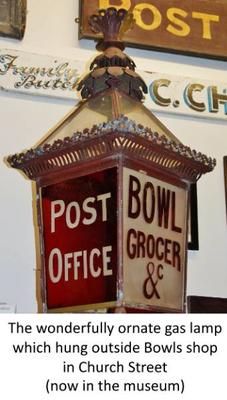
The History of Charlbury through ... a Victorian gas bill
Barbara Allison for Charlbury Museum
Here is a gas bill for the Friends Meeting House in Market Street dated 31 March 1871. It is quite colourful, printed on light blue paper. Our copy may have been in an album, as it is attached to a piece of card. The bill was sent to John Marshall Albright, the senior Quaker in the town. It is Gas Bill no 10 issued by the newly formed Charlbury Gas Company. The Meeting House had used 200 ‘feet’ of gas, for which it had to pay 1s 6d –that’s in ‘old money’, which is 7½p in today’s money. It was paid promptly and so got a discount of 2d, only paying 1s 4d. Frank Bowly wrote at the bottom that he had received the money.
Quite a change from today’s gas bills isn’t it. Now they are full of information: customer numbers, kWh (kilowatt hours), gas units and standing charges, VAT added on top, and so on, all covering three A4 pages of paper. We pay by bank transfer, direct debit or, being really old fashioned, put a cheque in the post. I suspect that Mr Albright just walked a few doors down Market Street to the Corner House, and paid Mr Bowly in cash!
But these old gas bills are not what they seem. It is very unlikely that the gas used was metered (that is measured), despite what the gas bill implies, when it has ‘state of meter’ and ‘rent of meter’ on it. Gas was only used for lighting at this time, so usually the gas user agreed with the gas company how many gas lights he was going to use, and the times in the day when they would be on. The gas company then calculated how many cubic feet would be used per quarter, and charged accordingly. There was obviously scope for customers to use more gas than they paid for!
We can see from this bill that the Meeting House has agreed it would use and pay for 200 cubic feet a quarter, but sadly, the bill gives no details of the number of lamps that represents. Another gas bill for the Meeting House, sent in 1883, show that the same amount of gas was paid for that year, and at the same price. How times have changed!
Many people found the gas too expensive to light their homes, and could not commit to a quarterly bill when their incomes were so erratic. So they kept to their paraffin lamps and candles. So to begin with, gas lighting was mainly used in the local shops (by November 1869) and the various churches (in 1870). This changed slowly once the penny-in-the-slot meter was invented in 1888, and people could pay for their gas as they used it.




